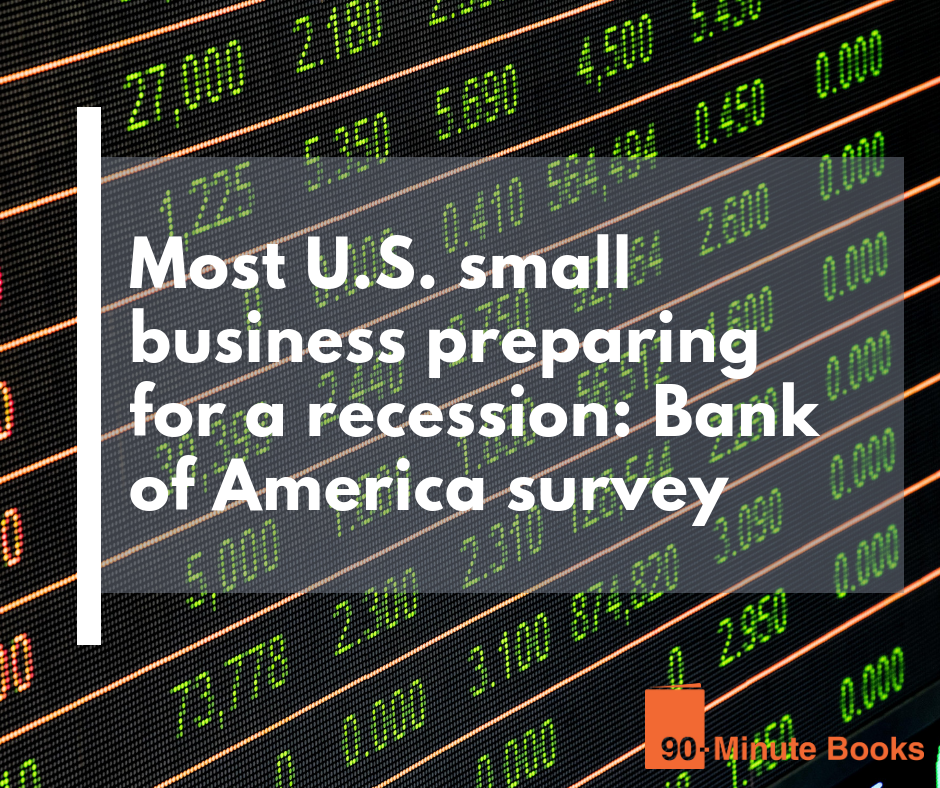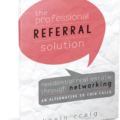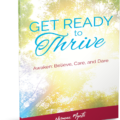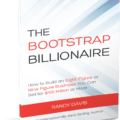Have you ever longed to start a fast marketing drive but didn’t wish to deal with the bother of putting together or revising your personal website?
You might already understand how to start a campaign without adjusting your website — landing pages could be the answer!
If you need to promote a product, accumulate leads, or advertise an event, landing pages provide the capability and flexibility to quickly launch your promotion.
Landing pages are marketers’ best friends. But only if you possess the capability to produce them effectively. Not quite there? No need to worry! This piece of writing will demonstrate how to construct a landing page that will bring a lot of conversions in just nine simple steps.
How to create a landing page in 9 easy steps
1. Specify a goal for your landing page
To construct a landing page successfully, it is important to initially determine the page’s purpose.
While landing pages can serve multiple purposes, marketers typically use them to achieve one of these three goals:
- To generate signups or leads
- To promote a product or service
- To generate click-throughs to another page
Once you’ve figured out what you’re trying to achieve, it’ll be simpler to pick the appropriate template and compile the material that needs to be included on your page.
2. Research your market and competitors
Once you have determined your landing page’s purpose, you must investigate your target audience and adversaries.
The goal of this research is to find out:
- What information your potential customers are interested in
- What content have your competitors been publishing to capture them
Watch the expressions and queries your intended population employs when discussing your theme. This could be rephrased as: This will assist in developing more convincing landing page content and conquer any doubts or rejections your possible customers could have.
Look at what data and content your rivals are using to cause people to take action.
3. Research what appeals to you visually.
It is the moment to get a pattern that will resonate with your audience and aid you in achieving your objectives.
The three primary methods for locating useful landing page templates are:
Looking for something on Google or Pinterest is the most apparent choice. You can speed up the process by deciding beforehand which landing page template you want.
One alternative is to visit Envato Market or Template Monster online. At that spot, you should be able to narrow down the results by your company kind, the content organization system you desire to use to oversee your land page (for example, WordPress), or separate characteristics your page should have.
Lastly, if you are considering a specific landing page builder, you can view the pages they have in their collection.
4. Choose your landing page builder.
It is conceivable to make a landing page without a specific landing page manufacturer.
If you have web design and HTML/CSS skills, you won’t have to use any outside sources to create an excellent landing page; however, you still need to find hosting.
The point of deploying landing pages in advertising endeavors is to be able to quickly put them out. A helpful landing page generator can assist you in efficiently designing a landing page with no trouble quickly.
5. Choose your web host.
If you’re working with one of the top tools, you can skip this part because they generally offer free hosting for their landing page builders.
When constructing a landing page independently, you’ll have to determine the site where it will be hosted, representing the area where all your files and pictures will be kept.
Choosing the right hosting provider is important for a few reasons:
- Your hosting will affect the speed and performance of your landing page, which is key to ranking high in search engines.
- It can help you ensure that your landing page is secure and capable of withstanding any potential threats.
- It can help you back up your files and the whole landing page so that it doesn’t get lost due to unforeseen circumstances.
6. Choose your domain name
Now is the moment to decide on your landing pages’ domain name – the web address
For websites, the domain name is critical. It has to be reliable and easy to remember because most people will directly enter it into their web browser to visit your site.
Regarding landing pages, the domain name is not as crucial. In many instances, companies specializing in marketing aim to direct people to their landing pages due to paid advertisements. They tend to be less concerned with individuals typing in the website address manually.
This doesn’t mean any harm in having a nice domain name unless you only want people to get onto your page with a direct link.

FREE BOOK
Discover the 5 Compelling Book Titles Types that create an ‘I Want That…’ response.
7. Add your content and customize the layout.
It is necessary to assemble everything and construct a high-performing landing page.
Choose a landing page design and begin customizing it using a sliding builder. You’ll want to make sure all the necessary elements are in place:
- An eye-catching heading and a supporting subheading
- Hero image, along and other visuals referring to your offer and its context of the use
- Landing page copy highlighting your unique selling proposition
- Call-to-action clearly indicating what the visitor should do on your page
- Social proof, including customer reviews and testimonials
- A signup form or a contact form
- Trust symbols such as logos of companies you’ve worked with
- Additional elements, such as countdown timers or popups, increase the sense of urgency.
8. Connect your tech stack
Once you have created your landing page, it is necessary to integrate it with your promotional strategies.
You do not desire to send visitors to a page that does not pass on your contacts’ information to your email advertising system or CRM.
Ensure that the given associations are established.
9. Preview and publish
You’re almost there! Before sending out your initial landing page, undertake one final review to ensure that it looks good, feels right, and works correctly.
If you didn’t get everything or want to make modifications, don’t worry. Pages created using landing page creation software or content management systems can be quickly modified, even once published online.
Tactics for Creating the Perfect Landing Page
What’s a good conversion rate?
Why do some landing pages work when others fail?
Those are tough questions to answer.
The explanation is that there is no definitive solution that would fit everybody.
It depends on a lot of different factors.
Anyone can build a landing page.
What guarantees that it will be successful?
The key is to use strategies that have been demonstrated to be successful.
You can’t afford to blindly follow advice.
You don’t want to fork out money for traffic and not make a purchase.
These are the critical strategies for a landing page surpassing the other competing options.
1. Use testimonials
You shouldn’t sell your products or services.
Your customers should be doing the selling for you.
92% of people read an online review before buying. Eighty-eight percent of those individuals have more faith in peer testimonials than in advertising done by companies.
Every company knows that testimonials are important. But many of them make the same exact mistake.
All the testimonials have been put together on a special page of their website, which is rarely visited.
People don’t go looking for testimonials. Rather than waiting, they prefer to evaluate them when making a vital choice.
That means testimonials should be everywhere.
Your homepage should feature them as one of the initial elements of view.
2. Use high-quality images
People are visual creatures.
Most of the time, our initial reaction to a website comes from the design.
Why?
It only requires us a tiny amount of time to take everything in. Our subconscious mind instantly determines whether we wish to stay or leave.
Incorporating excellent pictures on your primary pages is an effortless way to capture and keep people’s attention.
Apple has been doing it for years, too. They often employ a sharp, contrasting background shade to divert your attention to what is vital: the items.
Note that even though each of these pictures has been arranged, they are not generic.
That’s a critical difference.
The single ingredient behind powerful visuals today is authenticity.
Research into changing formats has revealed that genuine pictures usually generate better results than stock photographs.
Using a page with a real person produced 161% more clicks and a boost of 38% in registrations.
3. Try to limit choices
Most people are stressed today.
They’re overworked and running from meeting to meeting.
Your landing page shouldn’t add to any frustrations the person may be experiencing.
If you are uncertain, you should make your landing pages as uncomplicated as can be.
Reduce the number of choices a person has to make on one page.
Simplifying your landing pages will almost always increase conversions.
4. Limit scrolling length
An increasing number of people using web pages skip the portion seen without scrolling.
The majority of their time is typically spent scrolling to observe what is beneath.
However, that doesn’t mean we should overload landing pages.
Having long sales pages in certain scenarios is appropriate and advantageous. They can work extremely well in some cases.
For instance, they successfully generate leads when they launch advertisement initiatives for unknown audiences.
Nevertheless, they can be counterproductive in certain scenarios, depending on the request being made.
You can go long and in-depth for paid campaigns.
Cold traffic might not already know who you are. They will need to thoroughly comprehend what you are offering before investing.
For returning visitors, a concise form on a landing page that requests an email opt-in may be the only thing necessary.
In fact, they probably prefer it.
5. Use shorter forms if possible.
Do you see a theme developing here?
People want things nice and easy!
It makes a difference if you are marketing a costly product or service. You will have to request a great deal of data.
Generally, forms that are shorter in length are more likely to be completed than lengthy ones.
MarketingExperiments.com conveyed the results of a test done by Marketo that supports this statement.
They wanted to observe the results of using three different forms regarding conversions.
The first person owned nine pieces of land, the second owned seven, and the last owned five.
Unsurprisingly, the short form outperformed the others.
There are two guidelines to keep in mind when developing forms like this.
- Ask for only what you need. Less is better.
- The ‘ask’ should be appropriate for what you’re giving.
This implies that you may frequently have dissimilar sizes of forms for every offer.
6. Add directional cues
This might seem like an unbelievable query, but it is actually legitimate.
What would you like people who visit your landing page to do?
What location do you want people to convert or give permission to?
It is expected to be easily recognizable when a page is uncomplicated.
Incorporating basic visual indicators can make this very clear. It doesn’t have to be overly complex, either.
Arrows are a good starting point.
However, we’ve already discussed the power of visuals.
Most landing pages should feature real people when possible.
You can utilize those individuals to help bring attention to your page’s calls to action.
7. Make them an offer they can’t refuse
Examples discussed thus far could be effective in generating conversions.
They can subtly aid in getting people to do precisely what you desire.
However, there’s one element above all that dictates conversions.
At this point, people tend to think about specific parts, such as the call to action and the headline.
Again, those are important.
But they’re not the most important.
WordStream investigated $3 billion of yearly expenditure to confirm its findings.
It was determined that it was not a single factor that had the most significant effect on profits.
It was the offer itself.
You can be absolutely accurate with the rest of the items on this list. If your proposal does not entice your audience, your outcome will not be as successful.
There are a variety of approaches to making a fabulous offer.
Price is always at the top of that list.
For instance, Amazon provides an outstanding offer for purchasing their latest Echo.
Here’s why this offer is so good, though.
One can purchase several items and have them interact with one another. They can be utilized in multiple rooms within the same household.
In this instance, Amazon gives you an additional $100 off to persuade you to buy more.
Make sure you purchase more than one, or you will miss an amazing offer.
Amazon does not end up spending any money on anything. They only charge a small commission when you make a purchase.
But if that hindrance eventually results in a higher quantity of items sold? Then it’s a gamble worth taking.
Guest Post Disclaimer
The views expressed in this post do not represent the views of 90-Minute Books. The information has not been verified and should be considered an opinion. You are always advised to do independent research.











